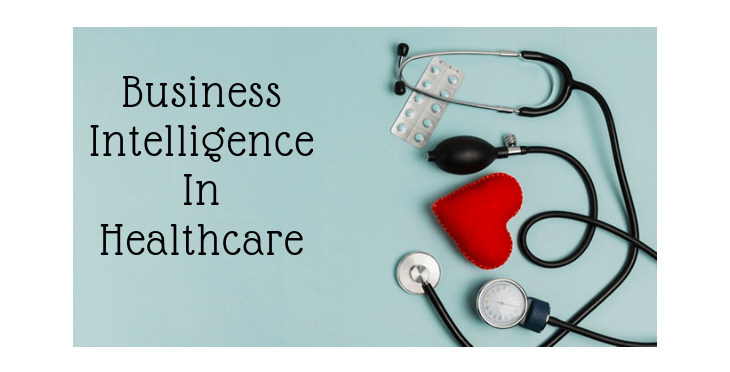Business Intelligence originated way before the term technology. The main aim of Business Intelligence (BI) is to convert the business-related raw data into useful and meaningful information.
Many times it has been observed that maturely handled unstructured data will help to identify and create new business opportunities.
As per LinkedIn, there are 147 industries and within most of them, Business Intelligence plays a vital role in growth.
Business Intelligence is considered to be a boon in particular for the Sales & Marketing sector as it helps in identifying customer's buying behavior, demographics, and other valuable insights which in turn makes your process all the more efficient.
Something similar happens in the logistics and transportation industry. Earlier, understanding logistics data was genuinely a tough job but after implementation of BI, data like driving behavior, routing and scheduling, turnaround time, utilization reports, financial reports, and fuel analysis reports can be easily determined and over a period of time BI has played a crucial role in Healthcare industry as well.
Growth of Business Intelligence from 2017 to 2026 in Healthcare
- According to a report by Stratistics MRC, the overall market share of business intelligence in healthcare is set to see an increase of about 17.4% from $3.75 billion in 2017 to $15.88 billion by 2026.
- Clinical analysis segment accounts for maximum growth in terms of usage. An increase in usage of EHRs across clinics along with the need to build up patient data has attributed to this.
- Due to federal reforms introduced by local bodies in North America, enhanced quality of care and reduction in the cost of medical bills in healthcare centers has become a necessity to abide by.
This has in turn brought upon the increase in usage of business tools to achieve such efficiency.
Business Intelligence Enters the Scenario of Healthcare
If we consider the basic necessities of a nation, healthcare should be given the highest preference, and improving its quality, safety values, and efficiency should be a priority and therein technology has really revolutionized this sector by reducing costs, improving efficiency, and keeping the quality up to mark.
The number of patients in the hospitals is only on a rise due to various illnesses, accidents, and other factors, and with these increasing numbers the process of maintaining data in the healthcare industry is also getting complicated and thus the needs of advanced analytics tools for decision-making capabilities are growing day-by-day.
Predictive modeling and data visualization tools are a requirement for hospitals and healthcare organizations.
These needs are fulfilled by the modern business intelligence software which gives an insight regarding daily practices, patient care, and satisfaction.
Applications of Business Intelligence in the Healthcare Industry
-
Patient Care and Satisfaction
Medicinal services are progressively reliant on digital technology to help the operations of a healthcare system.
Emergency clinics and other medicinal service associations need a situation that supports the day-to-day practices of surgeons, physicians, and all other healthcare personnel.
BI consolidates and presents all the cases to doctor which can be obtained via Electronic Health Record. This software keep track of all the patient data.
The doctor can access every single test and treatment report of the patient, both at the office as well as at home via a simple software application installed on mobile, tablet, or laptop.
Eliminating repeat tests helps in saving a lot of money and fulfills the patient satisfaction level who does not need to rehash a similar test, because of any missing data. Likewise, the doctor is also happy as he/she gets to serve the patient better.
-
Patient Personalization
With the help of Business Intelligence tools, software, and applications, patient data has become more accessible.
Say, for example, a patient was diagnosed with a tumor in 2016 and then got cured in that year only but due to some unknown reasons in 2019, another tumor got detected.
Then it is with the help of a BI tool that doctors can understand the patient’s medical history and diagnose him/her in an appropriate way for the current as well as any future concerns.
-
Improving decision making
For identifying and analyzing numerous healthcare administration flaws and complexities, the need for BI software is increasing.
Furthermore, progressed investigative capacities are important to understand key difficulties and connections between patient, clinical, and operational information.
BI software enables administrative heads to track Key Performance Indicators (KPIs) that break down, oversee, and help healthcare organizations to adjust their performance based on precise information and examination based knowledge.
-
Process Implementation
Utilizing BI tools to break down patient flow, improve persistent triage stream, and settle on improved choices dependent on the number of inhabitants in the healthcare association, emergency clinics will realize the perfect release times of a patient in this manner for the optimal utilization of bed space.
Besides any emergency cases, the treatment of patients can be organized more precisely. Hence improving patient results while limiting expenses by giving the right treatment at the right time.
-
Better Costs Allocation
Predictive modeling and data visualization are key segments in choosing the correct healthcare analytics tool for emergency clinics or hospitals.
Only when a BI user (healthcare professional) understands information about healthcare easily via different available tools then only he/she can use those insights to address risks, provide answers for the vital area of care, forecasting events for the near future.
The various instances of huge information in medicinal services represent it consistently. Giving better patient and clinical consideration, improving faculty dispersion, decreasing re-admissions, and overseeing costs required for the smart utilization of business intelligence applications in healthcare.
The genuine incentive for healthcare comes from giving the best dimension of consideration for patients dependent on well-examined information.
-
Claims Management
BI technology helps to screen and monitor cases for health insurance companies or medical coverage organizations. BI can help improve reaction times against claims.
However, it can help insurance agencies to safeguard themselves against deceitful cases and arrange the best cost for treatment. BI can help insurance companies improve estimating as well.
It can screen the measure of real versus false cases that get through their association, and furthermore, note what a number of clients are utilizing diverse social insurance rehearses for consideration and strategies.
Some of the Popular BI Tools which are used in the Healthcare Industry
-
Domo
Domo is a cloud-based business management software that coordinates with various information sources, includes excel sheets, databases, and online available data.
It is reasonable for organizations ranging from small businesses to big ventures and is compatible across a variety of devices ranging from Windows or Mac stages, iPad tablets, and cell phones as well.
Domo gives both micro and macro-level visibility and examination; from money adjustments and top-selling product offerings to gauge income by locale, showcasing rate of profitability (ROI) by channel, and that's only the tip of the iceberg.
It offers continuous dashboards with information relating to various business territories and execution measurements (e.g., key execution pointers, ROI, and so on.).
Domo likewise offers intuitive perception apparatuses and access to broad information through an incorporated dashboard.
-
Sisense Software
Sisense is a business intelligence software that provides information in analytics, visuals, and reports. This software allows businesses to analyze unique databases and produce relevant future business patterns for them.
Sisense enables organizations to accumulate information from numerous unique sources and club them into a solitary database.
When done, the software itself reworks information into a predefined standard format. Clients would then only be able to use the information as per their needs with the help of different filters.
Also Read:
10 Key Steps for Business Intelligence Implementation
Current trends in Business Intelligence and Analytics
Business Intelligence Tech Trends and Real-World Applications





